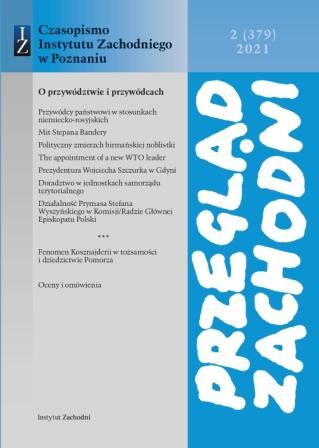Fenomen Kosznajderii, czyli o złożoności tożsamości i dziedzictwa pomorskiej krainy
The phenomenon of Kosznajderia, or on the complexity of the identity and heritage of the Pomerania land
Author(s): Karolina Ciechorska-KuleszaSubject(s): Christian Theology and Religion, Museology & Heritage Studies, Agriculture, Local History / Microhistory, Identity of Collectives
Published by: Instytut Zachodni im. Zygmunta Wojciechowskiego
Keywords: region; Kosznajderia; inhabitants of Kosznajderia; Pomerania; identity; heritage;
Summary/Abstract: The aim of this article is to answer the question about the place of Kosznajderia and its former inhabitants in the contemporary heritage and identity of the part of Pomerania in which the German population of the Roman Catholic denomination lived. The research problem is the Kosznajder identity and heritage in the area of the historical Kosznajderia. It is related to the slogan „Kosznajderia – the phenomenon of identity”, which has been strongly present in the regional discourse for several years. The author answers the question about the nature this phenomenon today and how it is present in the subregion and local communities. She hypothesizes that Kosznajderia and its former inhabitants are an important component of contemporary (sub)regional/local identity in statu nascendi. The heritage of Kosznajderia is a significant element of the identity discourse, in which, first of all, the common features of the former and present residents, and the importance of material heritage are emphasized. The research has shown that the agricultural character of these lands and Catholicism of the residents are a link between the past and the present. The complex history of this area and its population, including, above all, the difficult Polish-German relations and the breaking of historical, social and cultural continuity after World War II has infused contemporary identity processes with specific ambivalences. The author used the methods of field study: interviews (individual and group ones), observations and desk research.
Journal: Przegląd Zachodni
- Issue Year: 379/2021
- Issue No: 02
- Page Range: 153-169
- Page Count: 17
- Language: Polish

